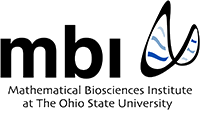
The Secret Life of Red Blood Cells Revealed Through Topological Data Analysis
Red blood cells serve the critical biological function of delivering oxygen to all parts of the human body. Yet the cell’s ability to perform its job undergoes many changes as it ages. It will typically shrink in volume by 30 percent, while the membrane becomes increasingly stiff. The loss in elasticity of the membrane results in an impairment of their ability to pass through microscopic...

The Kakeya Problem
Author: Larry Guth (MIT) The Kakeya problem is an open problem in Euclidean geometry, and it was a central theme in the 2014 IPAM long program “Algebraic Techniques for Combinatorial and Computational Geometry”. It is elementary to state, but it’s also a model for deep open questions in Fourier analysis. Different approaches to the problem have involved tools and ideas from many subfields of...

Kadison-Singer Resolved
In 2013, the Kadison-Singer problem was solved by Adam Marcus, Dan Spielman, and Nikhil Strivastava. As Dana Mackenzie said in the January/February 2014 issue of SIAM News, the Kadison-Singer problem was like a “great subterranean river of mathematics, mysteriously disappearing below the surface and reappearing where you least expect it.” The problem appeared in different guises in mathematical...

Topology Provides Tools for Intrusion Detection with Robot Swarms
Robotic swarms are increasingly being designed for tasks deemed too difficult, time-consuming, or hazardous for humans, such as underwater exploration, wildlife sampling, surveillance, and search and rescue. These cheap, simple robots move using collective behaviors that emerge from local interactions with each other and their environment, functioning much like social insects. One use of robot...

Polygon Iterations
In the Fall of 2013, ICERM had a semester program on experiental geometry, topology, and dynamics. One of the many projects undertaken during this semester was the study of polygon iterations – geometrically defined maps on the space of polygons. Perhaps the simplest polygon iteration is the midpoint map. Starting with an n-gon P1, we let P2 be the n-gon whose vertices lie at the centers of the...

Modeling the Prevention and Reversal of Type 2 Diabetes
A highlight of the August 2013 Workshop for Young Researchers in Mathematical Biology held at MBI was a presentation by Dr. Arthur Sherman of the National Institutes of Health, describing work with NIH post-doctoral fellow, Joon Ha, on modeling the disease process in type 2 diabetes (T2D). Diabetes is an unfortunate byproduct of the phenomenal success of the human race in providing inexpensive...

Mathematics and Cosmology
The subject of cosmology has progressed dramatically in the last 10-20 years. This is illustrated by, among other things, the Nobel prizes in 2006 (cosmic microwave background) and in 2011 (observations of supernovae). In particular, the observations of supernovae led to the unexpected conclusion that the uni- verse is expanding at an accelerated rate. As a result, the currently preferred...

Stochastic Models of Disease Spread
At a yearlong program at MBI, mathematicians, engineers, and bioscientists discussed new ways of analyzing the effects of random events on the long term behavior of large biological systems. A particular topic of interest was the development of stochastic methods in the study of infectious diseases. Within an individual, disease development involves both the stochastic evolution of viral or...

Homotopy Type Theory
During the academic year 2012-13, the School of Mathematics conducted a special program on a new approach to the foundations of mathematics entitled Univalent Foundations of Mathematics. The program was co-organized by Professor Vladimir Voevodsky of the School and Members Steve Awodey of Carnegie Mellon University and Thierry Coquand of the University of Gothenburg, Sweden. There were...

Mathematics Enables Effective Screening of Recessive Genetic Disorders
Yaniv Erlich directs a human genetics lab at the Whitehead Institute for Biomedical Research at the Massachusetts Institute of Technology (MIT). One of his research projects is to identify carriers of recessive genetic disorders that affect a large proportion of the Ashkenazi Jewish population. These genetic disorders are known to cause devastating diseases, such as Tay-Sachs, Canavan disease,...